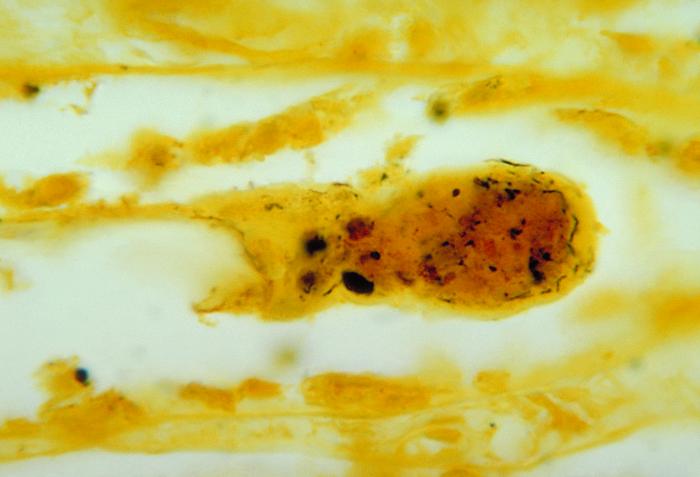Leptospirosis laboratory findings
|
Leptospirosis Microchapters |
|
Diagnosis |
|---|
|
Treatment |
|
Case Studies |
|
Leptospirosis laboratory findings On the Web |
|
American Roentgen Ray Society Images of Leptospirosis laboratory findings |
|
Risk calculators and risk factors for Leptospirosis laboratory findings |
Editor-In-Chief: C. Michael Gibson, M.S., M.D. [1]
Laboratory findings

On infection the microorganism can be found in blood for the first 7 to 10 days (invoking serologically identifiable reactions) and then moving to the kidneys. After 7 to 10 days the microorganism can be found in fresh urine. Hence, early diagnostic efforts include testing a serum or blood sample serologically with a panel of different strains. It is also possible to culture the microorganism from blood, serum, fresh urine and possibly fresh kidney biopsy. Kidney function tests (Blood Urea Nitrogen and creatinine) as well as blood tests for liver functions are performed. The later reveal a moderate elevation of transaminases. Brief elevations of aspartate aminotransferase (AST), alanine aminotransferase (ALT), and gamma-glutamyltransferase (GGT) levels are relatively mild. These levels may be normal, even in children with jaundice. Diagnosis of leptospirosis is confirmed with tests such as Enzyme-Linked Immunosorbent Assay (ELISA) and PCR. Serological testing, the MAT (microscopic agglutination test), is considered the gold standard in diagnosing leptospirosis. As a large panel of different leptospira need to be subcultured frequently, which is both laborious and expensive, it is underused, mainly in developing countries.
Leptospira can be cultured in Ellinghausen-McCullough-Johnson-Harris medium, which is incubated at 28 to 30ºC.[1] The median time to positivity is three weeks with a maximum of 3 months. This makes culture techniques useless for diagnostic purposes, but is commonly used in research.